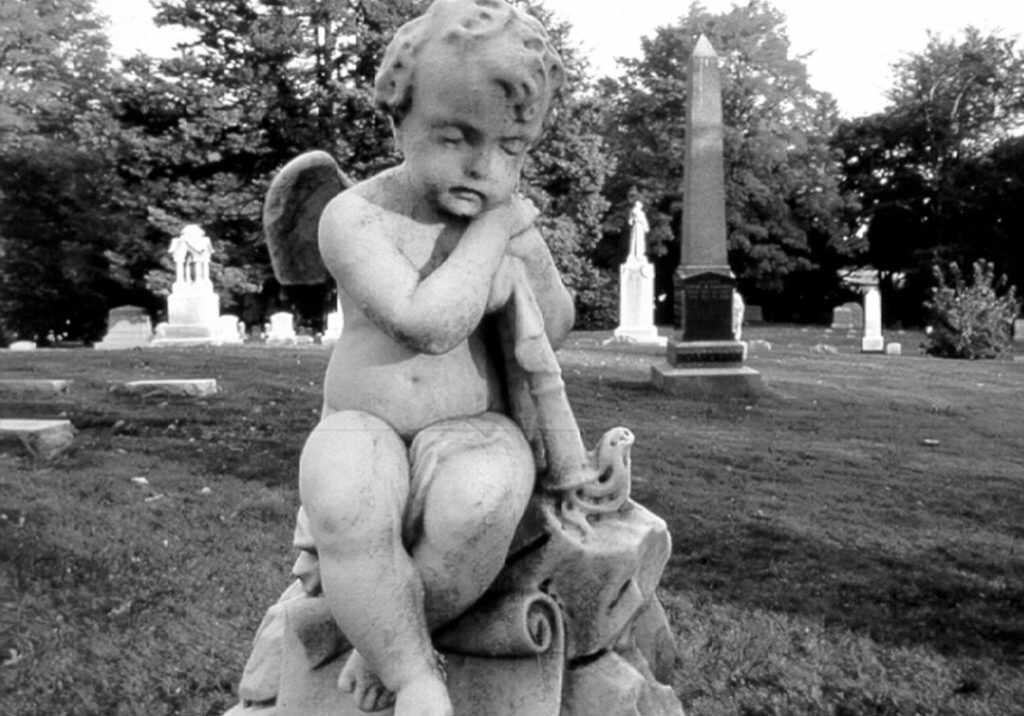The small monument for Anna Rinda Marcy, who died in 1882 at age 1, features a putto or a chubby male child, usually nude and sometimes winged.
Today putto and cherub are commonly used interchangeably although their origins are distinct.
Cherubim refer to Biblical angels, which are the second order of angels. Cherubim guard the Garden of Eden following Adam & Eve’s banishment. They are described as having four faces and four wings. They can travel in any direction without having to turn.
On the other hand, putti are secular and represent a non-religious passion. In the 1420s, the artist Donatello revived the classical figure of the putto, infusing it with Christian meanings.
The Marcy putto holds a horn, signaling resurrection or the departure of a soul from the earth and its arrival in heaven.

